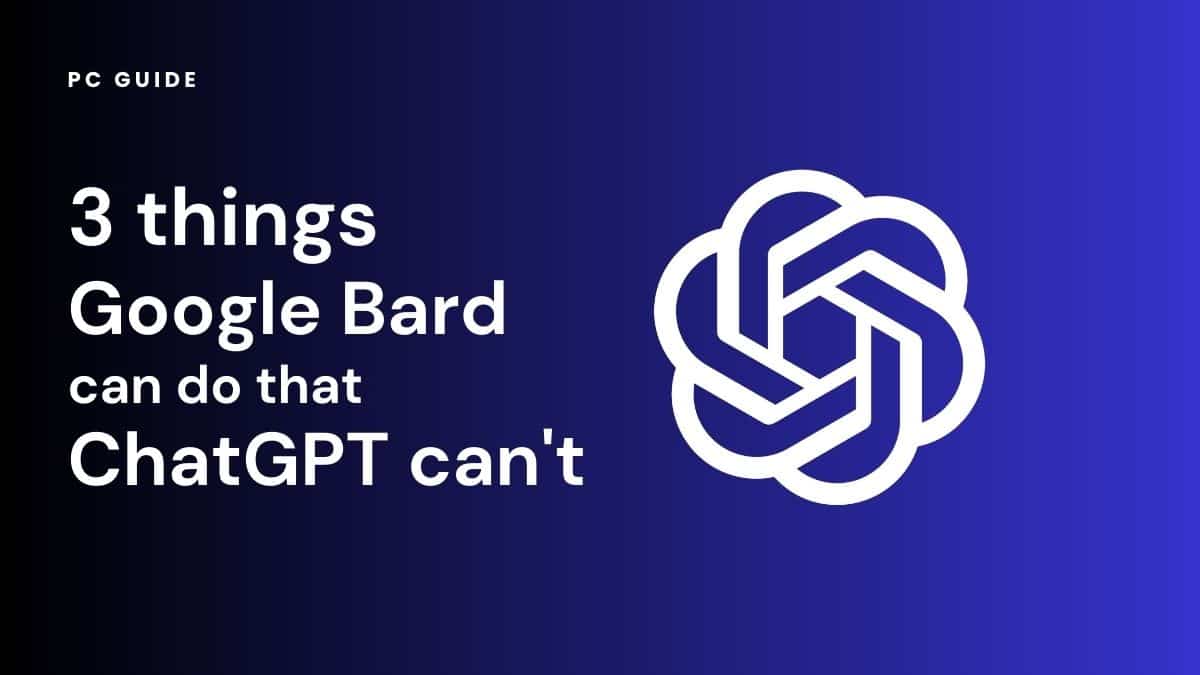3 things Google Bard can do that ChatGPT can’t

Table of Contents
Google Bard and ChatGPT have many commonalities. Both are conversational generative AI chatbots. Both use an LLM (Large Language Model) to turn simple prompts into natural human language dialogue. But Google has something that OpenAI doesn’t. The biggest multimodal search engine in the world. Here are a few things Google Bard can do that ChatGPT can’t.
How is Google Bard different from ChatGPT?
Google’s answer to ChatGPT, Bard, is a natural language processing chatbot with internet access by default, unlike OpenAI’s alternative. Thanks to Google Search, the tech giant has access to more user query data and their corresponding search results than any other company.
Essential AI Tools
This includes data on whether or not the user bounced from the site, clicked a link, or searched again for a better result, indicating whether or not the result was useful. This data is invaluable for training an AI model based on input-output pairings such as GPT-4. Try “What is ChatGPT – and what is it used for?” or “How to use ChatGPT on mobile” for further reading on ChatGPT.
The key differences between ChatGPT, Bard, and Microsoft’s Bing Search are largely dictated by their parent companies’ access to search data. In addition, only two have access to real-time information by default, and without plugins. The latter allows Bing and Bard to produce summaries from blog posts, taking complex topics and limiting them to whatever parameters you ask for.
What Google Bard can do that ChatGPT can’t
At release, the LLM on which Bard was based was called LaMDA, a good model for dialogue applications at the time. It has since been upgraded to draw from Google’s more powerful in-house model, PaLM 2 (Pathways Language Model). This LLM, when combined with other models for image and audio, creates possibly the most powerful multimodal AI on earth – and here are a few examples of what it can do:
Prompt with image
Google Bard can accept an input image with your prompt. Tell it how to use that image to provide you with information about it. As an example, prompt Bard with a photo of food and ask how many calories are in your next meal. It won't be perfect, but it will be a very educated guess.
Output an image
The search giant can also reply with an output image, unlike OpenAI's ChatGPT. Send a screenshot of your business's landing page, ask for improvements, and receive an AI-generated visual response with additional written feedback.
Voice prompting
Google Bard can even input and output audio. Ask Bard to generate a personalized podcast on the subject of your choice for your commute.
This list continues to expand. From Bard’s ability to export to Google Docs (for which you’ll need ChatGPT’s paid version, ChatGPT Plus) to integration with Gmail, and real-time internet scraping. With plugins, Google’s Bard can order groceries with Instacart, plan a trip with Kayak, and book a reservation with OpenTable.
All this being said, OpenAI’s ChatGPT may finally be losing its footing as the #1 AI Chatbot.
